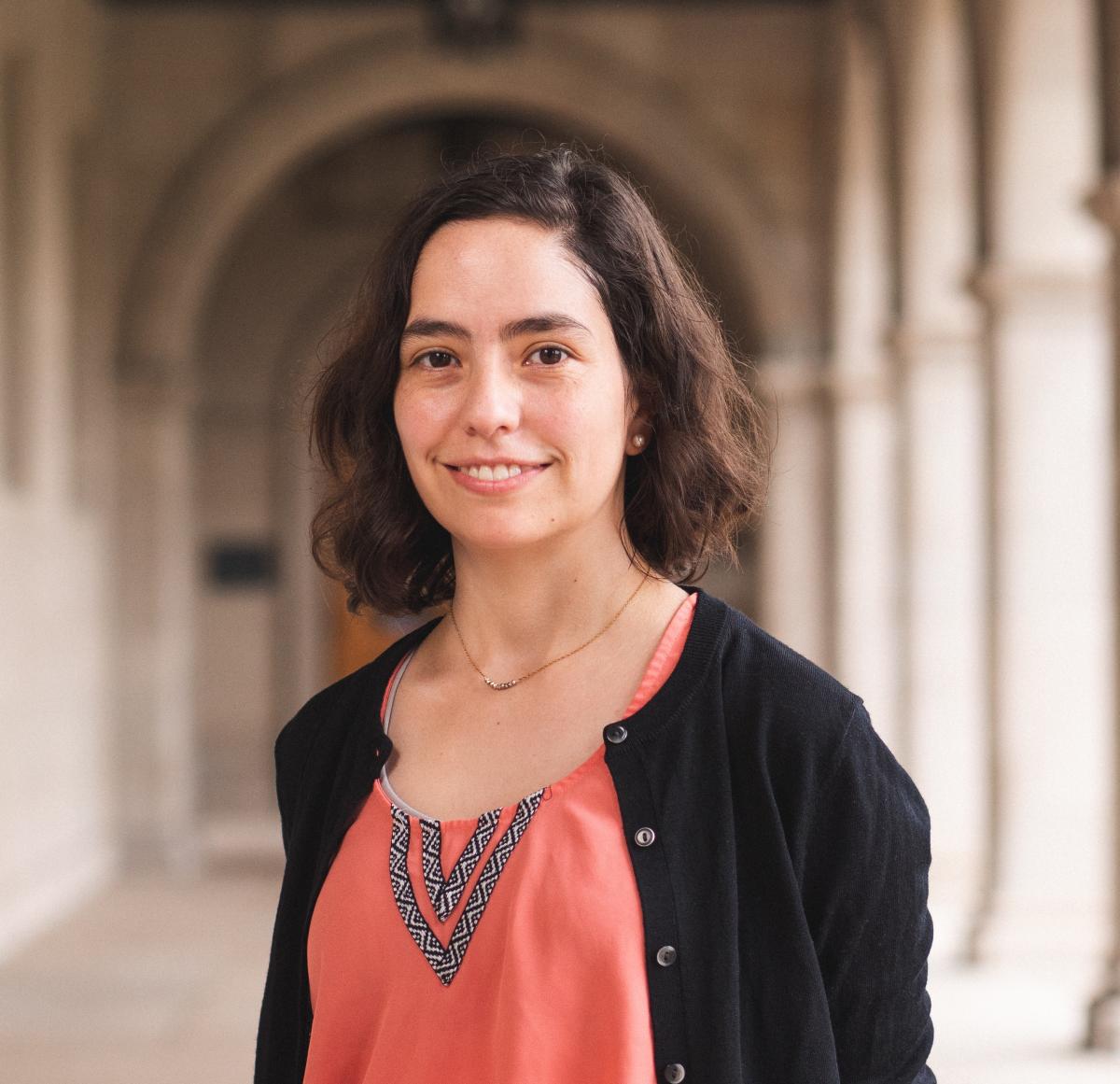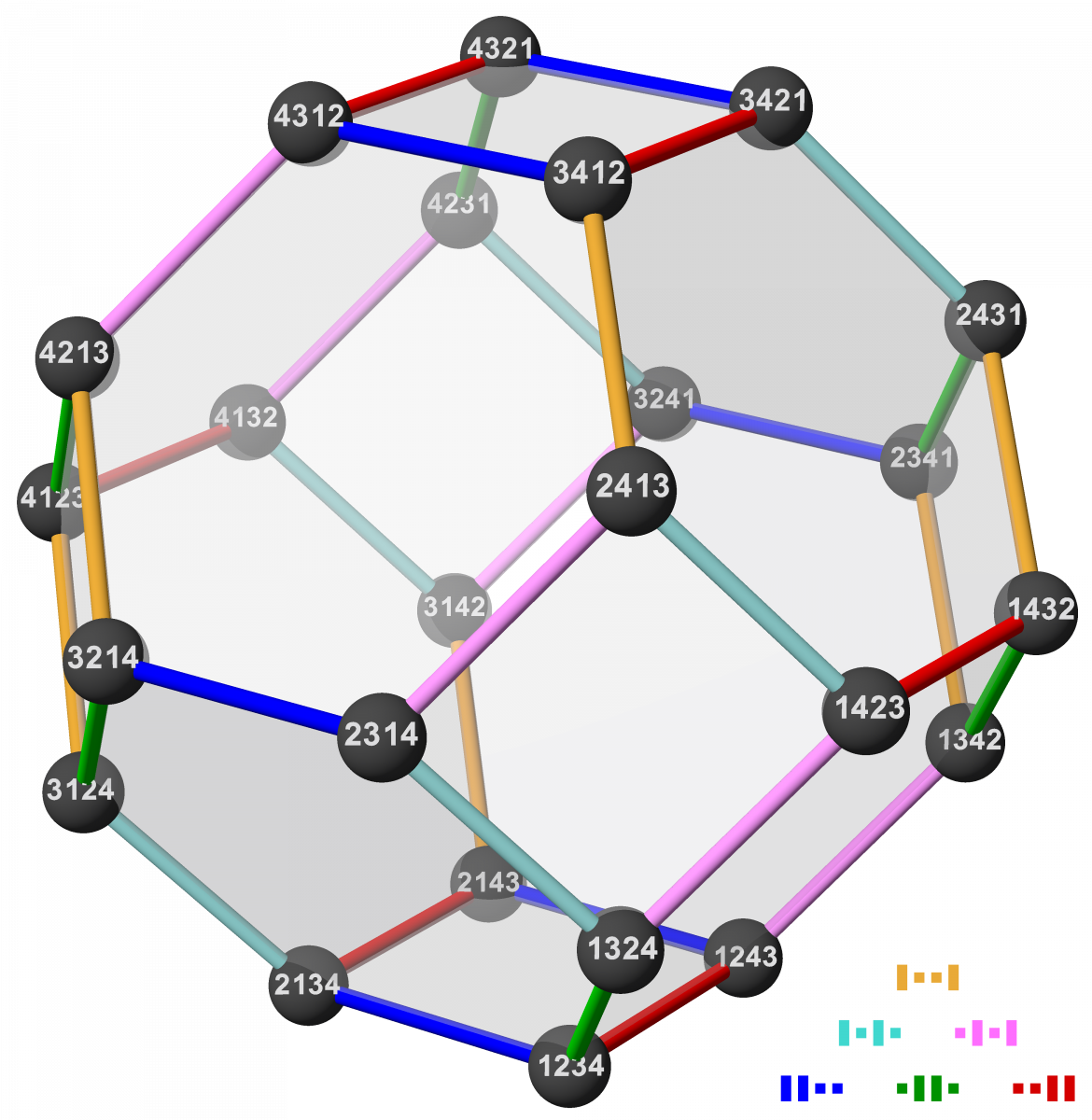Laura Escobar Vega shows students and young professionals new ways to connect with math and see themselves in the field.

Laura Escobar Vega, assistant professor of mathematics and statistics, is no stranger to looking at problems from multiple angles. In her research and teaching, Escobar works to build bridges between her two primary fields – combinatorics and algebraic geometry. For students and colleagues around the world, she is also building bridges to a more diverse and welcoming profession for those in mathematics and related industries.
It’s no secret that women and minorities are traditionally underrepresented in mathematics. According to recent survey data from the American Mathematical Society, women make up only 19% of full-time faculty in math departments with graduate programs. That figure drops to 12% for tenured faculty at the top 50 research institutions in the United States and even lower for women in minority groups.
Though the lack of diversity in math is clear from the numbers, what isn’t clear is how to address the problem. For Escobar, the most effective solutions are also relatively easy ones to enact – increasing visibility, helping students and professionals feel at home in the field, and encouraging personal connections.
Powerful intersections
Unsurprisingly, Escobar’s approach to problem-solving is rooted in mathematical principles. Escobar specializes in combinatorics and algebraic geometry. Broadly speaking, combinatorics is the study of the structure of finite objects. In algebraic geometry, mathematicians ask geometric questions about spaces in terms of polynomials, instead of more abstract shapes. Escobar is particularly interested in a set of geometric objects known as Schubert varieties, whose geometric information is encoded in permutations, a key topic in combinatorics which, among many applications, describe how to shuffle cards.

“Algebra is amazing in the sense that you’re encoding a lot of information into an equation, and it provides a lot of tools. Everything you do with equations can actually bring new meaning or insights back into the problem you started with,” Escobar said. “But, when you’re doing algebra, you sometimes lose intuition. All mathematicians struggle with it, but algebra is incredibly powerful.”
Student connections
Helping students develop their intuition around abstract mathematical concepts and learn to apply those skills across disciplines is a key feature of Escobar’s undergraduate courses. Escobar described the mathematician’s point of view as more formal – “we want to know why something is true” – but the mathematical foundations she provides, especially in combinatorics, translate seamlessly into her students’ computer science and engineering classes.
In such math-oriented fields, having a strong grasp on fundamentals is critical to solving problems in various contexts. Further, developing comfort with and fluency in math is essential for getting students to feel at home in mathematics and related industries. This sense of belonging is an intangible but critical factor in recruiting and retaining talented young people from diverse backgrounds – especially those who might not otherwise see themselves in math.
Escobar cites the traveling salesman optimization problem as an illustrative example. “Say you want to come up with a plan for a traveler to visit a bunch of cities and return home in the least amount of time, or money, or distance. You first have to ask, how do I approach this problem?” Escobar said. Taking the problem back to first principles lays the groundwork for then visualizing an intuitive solution.
“Using combinatorics and graph theory, you can turn the problem into a kind of puzzle,” Escobar explains. “Imagine a map with a dot for each of the cities and weighted lines connecting them. There are many ways to understand the relations between the points. The graph gives you a framework for figuring out how many possible paths are out there and which paths minimize the sum of the weights of the edges.”
By considering all the elements and their relationships, Escobar’s students learn to approach complex problems systematically. Combinatorics effectively shows them a new way to count. Algebraic geometry helps them makes sense of the shape of the solution and what it tells them. Connecting these two fields opens new avenues of inquiry and understanding.

Escobar also makes space for students to reflect on the material they’re learning through journaling and to see the human side of math by reading stories from mathematicians at all levels.
“I get so much feedback from my students that I wouldn’t get otherwise. If you just wait until students ask a question to check in, you’ll miss a lot. Not everyone will ask and not everyone knows what question to ask,” Escobar said. “There’s this stereotype that professional mathematicians don’t struggle with math, and that’s absolutely wrong. We struggle with math almost daily, and it’s ok to struggle. If you enjoy it, struggling doesn’t mean you’re bad at it. It can actually be very joyful when you have the ‘aha!’ moments and very rewarding despite the challenges.”
Professional visibility and outreach
Beyond the classroom, Escobar is also passionate about improving the professional participation of underrepresented groups in mathematics and other STEM fields.
Through her involvement with the Association for Women in Mathematics (AWM), the Colombian Meeting on Combinatorics (ECCO), the Society for Advancement of Chicanos/Hispanics and Native Americans in Science (SACNAS), and other professional organizations, Escobar both contributes to and benefits from a growing, interconnected network of professional mathematicians.
“Often times, women and Latinx mathematicians, like I am, feel a lot of pressure to do service work. Luckily, it’s something I’m passionate about and I’m happy to do,” Escobar said. “But attending events geared toward underrepresented groups really underscores that simply being a successful member of the group is a huge impact. People see you, see where you are, and see that there’s a place for them. Just improving faculty diversity has a broader impact.”
"Attending events geared toward underrepresented groups really underscores that simply being a successful member of the group is a huge impact. People see you, see where you are, and see that there’s a place for them."
Students and junior faculty are especially important groups for Escobar. She organizes the biannual ECCO conference, which brings Latinxs from all over the world together and includes teaching modules aimed at supporting students. Escobar is also a co-organizer for an online seminar on “Algebra, Geometry, and Combinatorics.” The virtual event improves visibility of early career mathematicians, especially women, and provides a place to access high-quality talks.
“It’s really important for members of underrepresented groups in the sciences to have events where you go and you’re the majority, where you’re surrounded by people like you,” Escobar said. “It’s extremely energizing and helpful. In my experience, I return from these conferences much happier with being a mathematician, and I think it must play a huge role in retention.”
Through these and efforts like them, Escobar says, it’s now easy to find women in combinatorics. Looking ahead, she plans to continue making space for underrepresented mathematicians. “It’s important to have intersecting goals and connections between different groups. The more communication and support there is from the larger community, the more successful diversity initiatives are going to be,” Escobar said.




